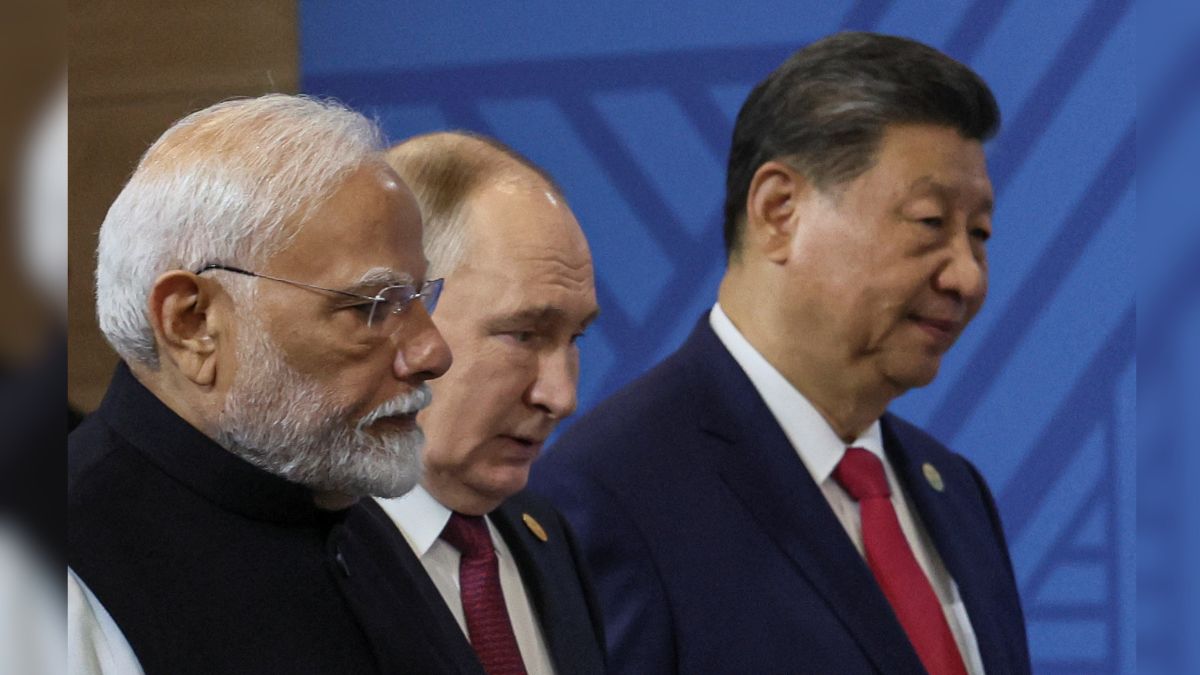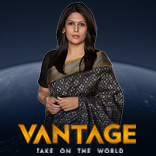Efforts are underway to reactivate the long-dormant Russia-India-China (RIC) trilateral dialogue, with both Moscow and Beijing openly supporting the resumption of the format.
India has responded with a measured stance, acknowledging the importance of RIC but indicating that any decision to reconvene would depend on agreement among all three nations at a mutually suitable time.
The renewed interest in RIC follows years of inactivity brought on by both the global Covid-19 pandemic and the India-China military tensions in eastern Ladakh that escalated in 2020.
How and why RIC came about
The Russia-India-China trilateral format traces its origins to the late 1990s, originating from an initiative led by former Russian Prime Minister Yevgeny Primakov.
It was designed as a strategic alignment to offset Western dominance, especially US unilateralism, and to promote a multipolar global system based on sovereign equality and regional cooperation.
Primakov’s idea found early momentum in the following decade. Between 2002 and 2020, RIC hosted more than 20 ministerial-level meetings, bringing together foreign ministers and officials from sectors such as trade, energy, and disaster management.
A significant milestone was the 2007 Delhi Security Summit, where the foreign ministers of the three countries — Li Zhaoxing (China), Pranab Mukherjee (India) and Sergey Lavrov (Russia) — deliberated on cross-border security concerns, global governance reforms, and regional challenges.
The trilateral engagement broadened between 2008 and 2010 through thematic working groups.
These expert-level meetings explored cooperation in sectors such as agriculture, public health, innovation, and emergency response. Sessions were held across various cities, including Bengaluru, Moscow, Samara, and different Chinese locations.
Despite its promising start, the format lost momentum in the wake of multiple geopolitical setbacks.
What stalled the future of RIC
RIC activities came to a halt in 2020. The outbreak of the Covid-19 pandemic globally disrupted diplomatic schedules and international gatherings.
This was quickly followed by the India-China military standoff in eastern Ladakh, culminating in the Galwan Valley clash, which marked the most serious border conflict between the two nations in decades.
Since the incident, bilateral relations between India and China have remained strained, with India insisting that peace and stability along the Line of Actual Control (LAC) are prerequisites for full diplomatic normalisation.
The deep freeze in ties also extended to multilateral forums where both nations participated, including RIC.
How Russia & China are trying to renew RIC
The most recent wave of interest in reviving the RIC has been led by Moscow and Beijing. Russian Deputy Foreign Minister Andrei Rudenko was quoted by Izvestia as saying that Russia is in active dialogue with both New Delhi and Beijing on the matter.
“This topic appears in our negotiations with both of them. We are interested in making this format work, because these three countries are important partners, besides being the founders of BRICS,” Rudenko said.
He added, “Therefore, the absence of this format, in my opinion, looks inappropriate. In this regard, we expect that the countries will agree to resume work within the framework of the RIC — of course, when relations between these states reach a level that allows them to work in a trilateral format.”
China has echoed Russia’s position. At a regular media briefing, Chinese Foreign Ministry spokesperson Lin Jian said, “China-Russia-India cooperation not only serves the respective interests of the three countries but also helps uphold peace, security, stability and progress in the region and the world.”
He added, “China stands ready to maintain communication with Russia and India on advancing the trilateral cooperation.”
This diplomatic overture follows the visit of Indian External Affairs Minister S Jaishankar to China for the Shanghai Cooperation Organisation (SCO) foreign ministers’ meeting, where he also met with Chinese Foreign Minister Wang Yi and Russian Foreign Minister Sergey Lavrov.
“I would like to confirm our genuine interest in earliest resumption of the work within the format of troika – Russia, India, China – which was established many years ago on the initiative of Yevgeny Primakov (former Russian PM), and which has organised meetings over 20 times at the ministerial level since then, not only at level of foreign policy chiefs, but also heads of other economic, trade and financial agencies of three countries," Lavorv had also said in June.
What India’s stance is vis-à-vis RIC
While Moscow and Beijing have made their intentions clear, New Delhi remains non-committal about any immediate revival of the trilateral grouping.
During a press briefing, Indian Ministry of External Affairs spokesperson Randhir Jaiswal reaffirmed India’s position.
“This consultative format is a mechanism where the three countries come and discuss global issues and regional issues of interest to them,” Jaiswal said.
“As to when this particular RIC format meeting is going to be held, it is something that will be worked out among the three countries in a mutually convenient manner.”
He clarified that no meeting has been agreed upon, and there are currently no ongoing talks regarding scheduling a new RIC session.
Sources also confirmed to PTI that any such planning would require alignment on broader diplomatic concerns.
At the heart of India’s cautious approach lies its uneasy relationship with China.
Although bilateral ties have shown tentative signs of improvement since Prime Minister Narendra Modi and Chinese President Xi Jinping met on the sidelines of the BRICS Summit in Kazan last year, key issues remain unresolved.
Subsequent visits to China by National Security Advisor Ajit Doval and Defence Minister Rajnath Singh contributed to a series of diplomatic exchanges aimed at stabilising relations.
However, India has consistently maintained that a full normalisation of bilateral engagement with China cannot occur unless the border situation improves.
How important RIC is in today’s global order
The RIC format is not just a diplomatic exercise — it has also functioned as a critical component of larger multilateral structures such as Brics and the SCO.
These platforms are seen as vehicles for fostering a multipolar global system, one not dominated by any single superpower.
The RIC countries — Russia, India, and China — are all large developing economies with significant regional and global influence.
Their shared interests include restructuring global governance institutions, enhancing South-South cooperation, and promoting development-focused multilateralism.
The expansion of Brics to include new members such as Egypt, Iran, Indonesia, Ethiopia, and the UAE shows the evolving role of the bloc.
Since Brics was originally launched by Brazil, Russia, India, and China in 2006 (with South Africa joining later), its foundation was effectively built upon the collaborative dynamics that RIC had envisioned.
Despite this shared platform, internal tensions — especially between India and China — have frequently diluted the RIC’s effectiveness.
China’s continued support to Pakistan in forums that target Indian interests, and strategic friction along the LAC, have significantly contributed to a trust deficit.
Additionally, India’s active participation in the Quad — alongside the United States, Japan, and Australia — has not been welcome, especially from Beijing’s viewpoint, which sees the grouping as a containment strategy against its rise.
Russia, for its part, finds itself in a balancing act.
While facing diplomatic isolation from the West due to the ongoing war in Ukraine, Moscow has sought to strengthen ties with both India and China.
Russian analysts suggest that the Kremlin views RIC as a way to offset India’s growing proximity to the US and the European Union.
As things stand, the revival of the RIC remains under consideration but not yet in motion.
With inputs from agencies


)
)
)
)
)
)
)
)
)



